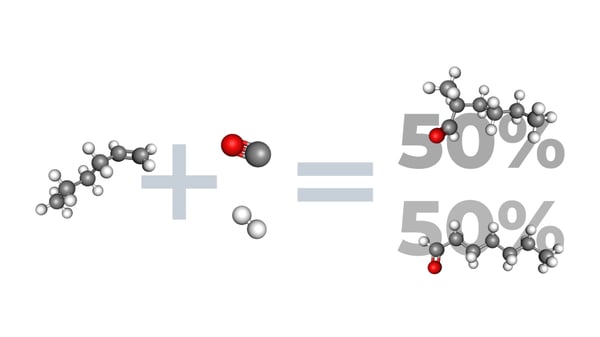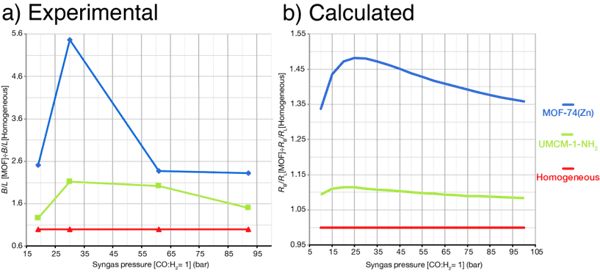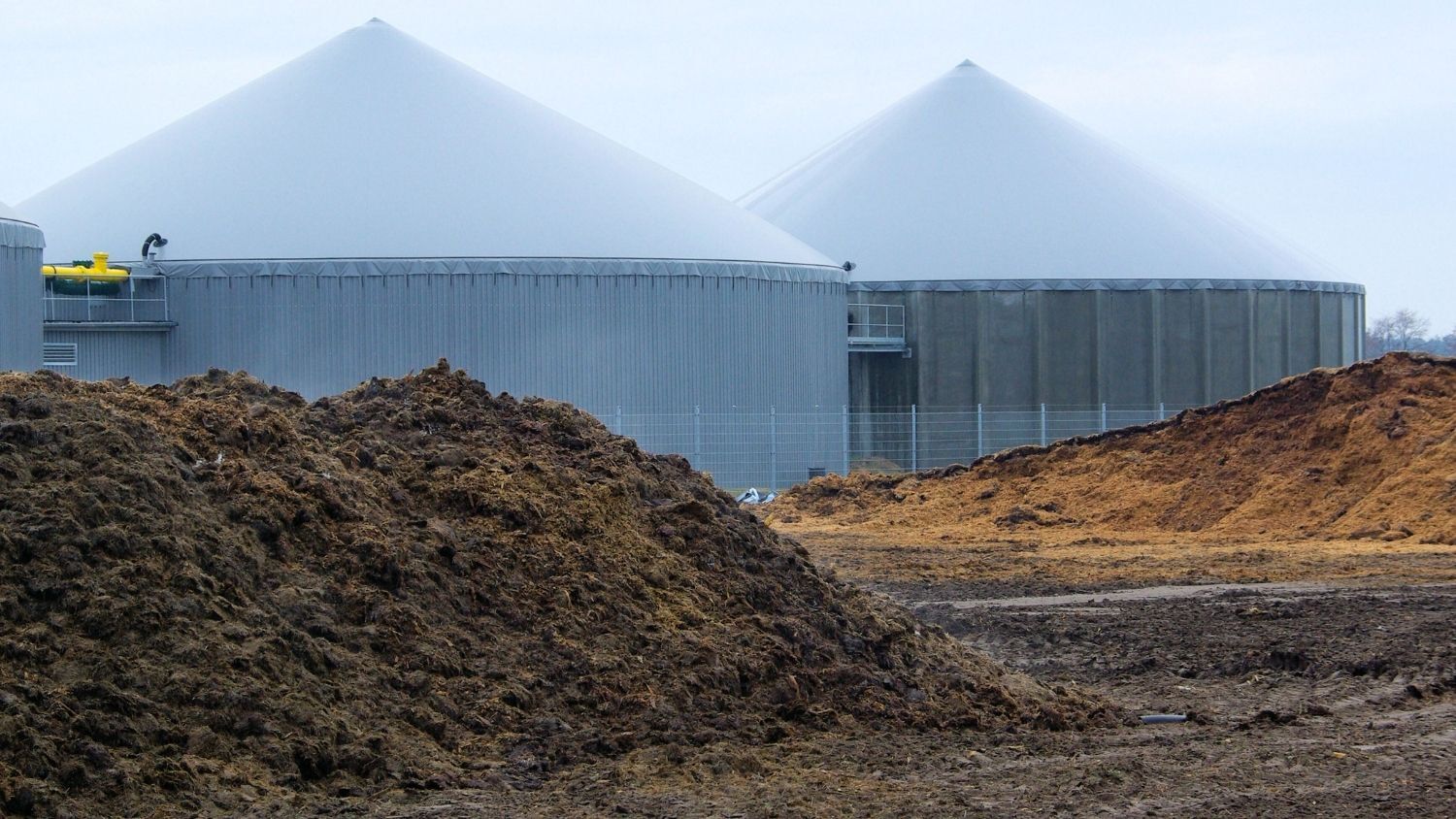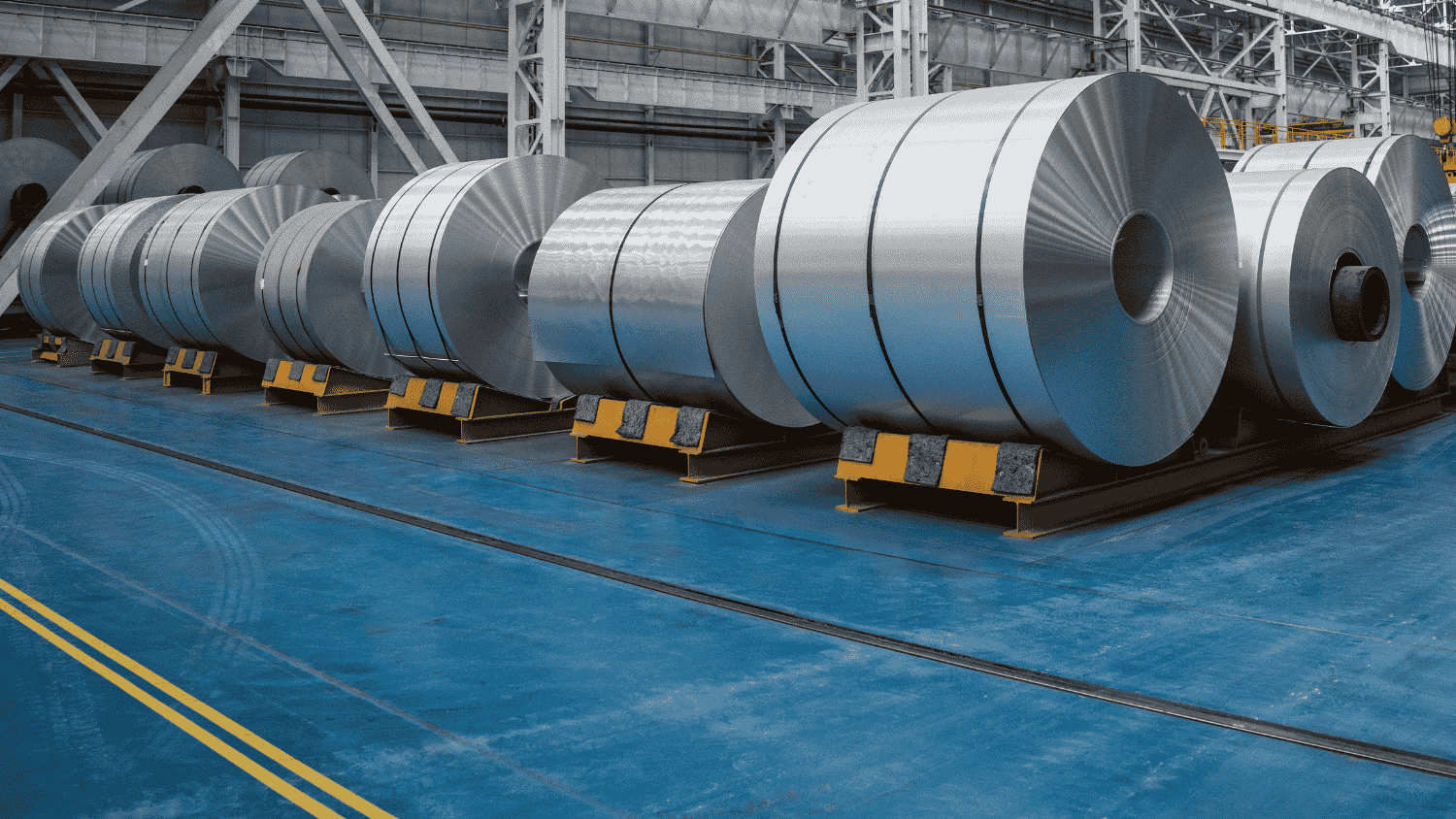Using porous nanomaterials shifts the catalytic yield of hydroformylation towards wanted end products, as the reaction will be altered within the pores of the material.
Most commercial products – some estimate 90% of all products – are made possible by catalysts at some point in the value chain. Optimising catalytic processes is thus of great importance to a wide range of industries.
Heterogeneous catalysis and selectivity
In heterogeneous catalysis, the catalytic material is in another phase than the reactant material – for example if the catalyst is solid and the reactant material liquid or gaseous. Separation of catalyst and reactant or end product is thus easier than in homogeneous catalysis, in which all materials are in the liquid state. However, homogeneous catalysts are highly selective in contrast to heterogeneous catalysts. In other words, homogeneous catalysis will only produce specific end products, while heterogeneous catalysis will produce several products that have to be separated in a following step.

Standard hydroformylation results in a ~50% branched / 50% linear aldehyde ratio
As linear aldehydes are commonly used as raw material for many products, the hydroformylation of olefins to linear aldehydes is already optimised.The group of researchers originally wanted to further improve the hydroformylation of linear aldehydes, but the results of their experiments made them think again. “When we started running experiments, we discovered that MOFs can be added to the reaction mixture and be selective to the branched product”, Marco Ranocchiari, Laboratory for Catalysis and Sustainable Chemistry at the PSI Switzerland, explains. Even though branched aldehydes are not as demanded, their production is rather difficult due to complex catalysts. The research group has thus explored these counterintuitive results as they further state.
Porous materials as nano-reactor vessels
Metal-organic frameworks (MOFs) are porous materials based on two building blocks, metal ions and organic linkers. Theses compounds feature high surface areas and a variety of properties that prove useful for catalysis.
“The porous structure can be seen as nano-reactor vessels, in which conditions are given that are otherwise almost impossible to reach” Gerald Bauer, author of the study and CTO of novoMOF, explains. Externally, the catalysis is heterogeneous as the MOF is in solid state. However, the catalytic process takes place within the MOF pores and is basically homogeneous. Using metal-organic frameworks in the catalysis followed a seemingly simple idea – controlling the spatial arrangement of the molecules by confining them in the nano-reactors and thus creating the right reaction conditions.
“We have two hypotheses why the MOF enhanced selectivity of catalysis: the MOF changes the reactivity of the active site during the adsorption, or the MOF pores change kinetics and energetics of the reaction”, Gerald Bauer says. Of the two hypotheses, the changed selectivity through electronic interaction seems unlikely.
Adsorption increases catalytic selectivity
By adsorbing the reactant molecules onto its surface, the MOF seems to alter the catalysis – similarly to the adsorption-enhanced selectivity of zeolites. Just like in gas storage in MOFs, the molecules are as closely packed as if we compressed them at 400 bar. Additionally, the MOF pores decrease the concentration of CO and H2 around the olefins and thus create the perfect condition for the reaction.
Catalysis shifted from ~50% branched/50% linear aldehydes to a ~85%/15% ratio
The catalysis shifted from ~50% linear / 50% branched aldehydes to a ~15%/85% ratio – a significantly higher selectivity than in other heterogeneous catalysts used in the experiment. The researchers used several MOFs for their experiments and later validated the results with computational methods – and the zinc MOF-74 showed the best results.
Selectivity comparison between experiments and computational approach (by Gerald Bauer in https://doi.org/10.1038/s41467-020-14828-6 licensed under CC BY-ND 4.0 )
Outlook for fine chemical catalysis
Gerald Bauer sees many applications of this approach for other catalytic processes. “Using such a ‘zwitter approach’ – homogeneous catalysts in a heterogeneous catalysis – can improve specialised formulation in the chemical and pharmaceutical industry”. By understanding the reaction – in this case the hydroformylation of olefins – the MOF material can change reactivity and selectivity of the catalyst. In the future, existing catalytic processes can be re-evaluated to improve the results by simply adding metal-organic frameworks.
The original article was published in Nature Communications:
Bauer, G., Ongari, D., Tiana, D. et al. Metal-organic frameworks as kinetic modulators for branched selectivity in hydroformylation. Nat Commun 11, 1059 (2020). https://doi.org/10.1038/s41467-020-14828-6




